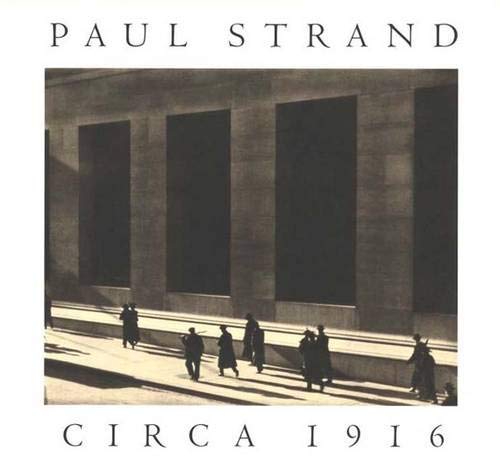metropolitan museum of art e 070 (1 risultati)
Tipo di articolo
- Tutti gli articoli
- Libri (1)
- Riviste e Giornali
- Fumetti
- Spartiti
- Arte, Stampe e Poster
- Fotografie
- Mappe
-
Manoscritti e
Collezionismo cartaceo
Condizioni
- Tutte
- Nuovi
- Antichi o usati
Legatura
- Tutte
- Rilegato
- Brossura
Ulteriori caratteristiche
- Prima edizione
- Copia autografata
- Sovraccoperta
- Con foto
- No print on demand
Paese del venditore
Valutazione venditore
-
Paul Strand Circa 1916
Editore: Metropolitan Museum of Art, E-070, 1997
ISBN 10: 0300086504ISBN 13: 9780300086508
Da: Last Exit Books, Charlottesville, VA, U.S.A.
Libro
Hardcover. Condizione: Very Good. Hardcover. 4to. Metropolitan Museum of Art, New York. 1998. 192 pgs. First Edition/First Printing. DJ has light shelf-wear present to the DJ extremities. Bound in cloth boards with titles present to the spine and front board. Boards have light shelf-wear present to the extremities. No ownership marks present. Text is clean and free of marks. Binding tight and solid. Paul Strand (1890 1976) was one of the most important and influential photographers of this century. The dramatic achievements of his early career, which have not until now been studied apart from his entire oeuvre, are the focus of this book, which accompanies an exhibition at The Metropolitan Museum of Art, New York. Spurred by the example of Cézanne, Picasso, and Nietzsche, Strand pushed the medium into artistic terrain considered too difficult, cerebral, or brutal to describe with a camera. His undeniable success brought photography to its maturity. For concentrated power, formal coherence, and human sensitivity, the extraordinary pictures he made in and around New York City in 1916 have never been bettered. After studying photography with the social reformer Lewis Hine, Strand began to absorb the ideas of the European avant-garde, gradually abandoning the painterly effects of pictorialism in favor of a candid and psychologically potent realism on the one hand and a masterfully wrought abstraction on the other. Fellow photographer and art entrepreneur Alfred Stieglitz recognized Strand's astonishing pictures as bold strides into a new world and heralded them as the first images in an incisive modern vision-a direct and flexible idiom expressive of twentieth-century experience. Strand's large, beautiful platinum prints are reproduced here in superb tritone plates. The text by Maria Morris Hambourg traces the early development of Strand's ideas, the complex cultural context of his experiments, and the emergence of such masterpieces as Wall Street, White Fence, and Blind. EB; 12.8 X 11.7 X 0.9 inches; 168 pages.


